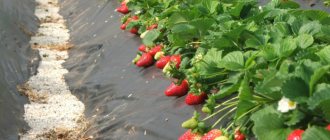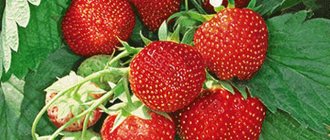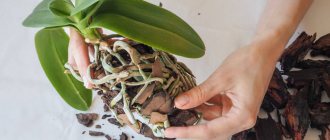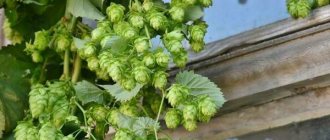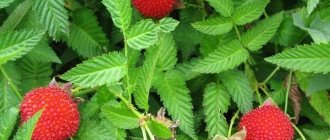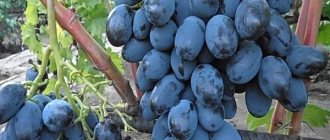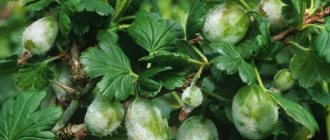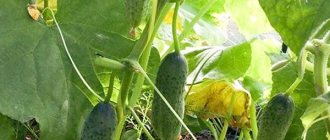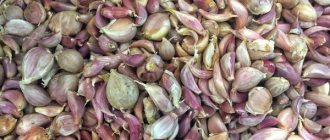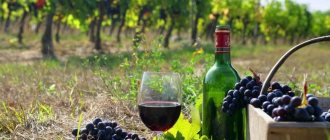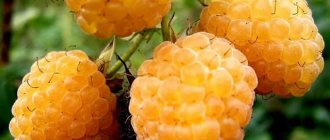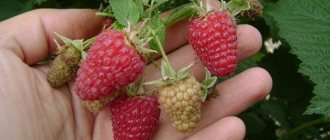Which black covering material to choose for strawberries
The technology of growing berries under such a covering is popular among gardeners, since the black cloth does not allow sunlight to pass through and at the same time on hot days promotes the normal growth and development of strawberry bushes. In addition, inorganic mulch, if used carefully, can be used for 4 years.
What is the name of the black strawberry material?
Inorganic mulch coating is the name given to the material used to cover strawberry beds.
Main varieties
To cover strawberries, several types of materials are used, which differ slightly in their properties.
Agrofibre
Considered one of the best mulching coatings. Agrofibre retains moisture for a long time and is breathable. Plants under it feel comfortable even in dry summers.
Unfortunately, agrofibre attracts slugs. Therefore, when choosing a site for strawberries, you need to take into account their presence in the soil.
Agrospan
Using agrospan, you can protect the root system of seedlings from frost. The material allows water to pass through well, so watering strawberries does not cause any particular difficulties.
Spunbel
The material is made of polypropylene, it does not make mulching strawberries difficult. This material stands out for its strength and lightness. Strawberries that grow under spanbel do not need weeding.
Spunbond
A fabric made from molten polymer fibers. It is durable, strong and practically does not wear out. However, to cover plants, it is necessary to choose a material with a density of at least 60 g/m2.
Lutrasil
The fiber practically does not get wet and eliminates a large amount of water evaporation in the strawberry beds. Compared to other black covering materials, lutrasil can let the sun through, although it can provide air exchange and protect strawberries from spring frosts.
How to plant strawberries on covering material in the fall
The process of planting strawberries on agrofibre is quite simple and does not require any special knowledge. It is enough just to observe the timing of planting and choose the right place.
Preparing the beds
When choosing a place to plant strawberries, you should give preference to well-lit areas with a relatively flat surface, preferably on a hill, away from groundwater. Sloping beds can be limited by wooden supports, so that the soil will not spread to the sides when watering.
Before planting, the selected area is carefully dug up, cleared of debris and loosened, after which fertilizers are added to the soil. For this you can use wood ash or humus, but, in general, any mineral fertilizer will do.
Laying the material
The agrofibre is laid with an overlap of about 15-25 cm. Along the perimeter of the bed, the canvas is pressed to the ground using any heavy objects so that the agrofibre sheets are not torn off by strong winds. For this you can use:
- broken brick;
- stones;
- construction plastic heels;
- pieces of paving slabs.
Then these items are usually replaced with special hooks made of medium-thick wire or “pins”, which you can make yourself. To do this, pieces of wire 50-80 cm long are bent in half and used to fix the agrofibre on the bed.
Preparing seedlings
Strawberry seedlings are moved into open ground in the evening or on a cool cloudy day, but immediately before planting, the seedlings must be prepared.
1-2 hours before transplanting, water the strawberries generously. For this, a warm humus solution is usually used, but you can also water the plants with plain water at room temperature. After this, the seedlings are dug up and the plant roots are soaked in a biogrowth stimulator for 2 hours. There are many options for a solution for preparing seedlings, but most often they use an ordinary herbal starter rich in potassium, nitrogen and phosphorus. It is prepared as follows:
- Crushed nettle leaves and legume greens are placed on the bottom of a glass container.
- The container is filled with warm water, but not to the top.
- The resulting mixture is sprinkled with double superphosphate and left to ferment for 7-14 days.
- The readiness of the herbal starter is indicated by the absence of foam when stirring the solution.
Important! This starter can be used for subsequent feeding of strawberries.
Seedlings for planting strawberries on agrofibre in the fall should have at least 3-4 leaves, and there should be no plaque or spots on them. Plant roots should be smooth and free of rot. The optimal root length is 10 cm, no more. If necessary, they are trimmed using scissors. You cannot cut off the roots - this can damage the entire root system of the seedling.
Landing
The first step is marking the agrofibre. It is important to place the bushes so that they are easy to reach. To do this, you can equip the beds with special paths made of boards or paving slabs.
The optimal distance between two adjacent holes is at least 20 cm. In the marked places, make 2 cuts of about 10 cm, crosswise, after which the corners of the agrofibre are bent inward. Then the seedlings are lowered into the resulting hole into a previously prepared hole. Its depth depends on the height of the container in which the strawberries grew before transplanting.
Additional information about the features of planting strawberries on agrofibre in the fall is shown in the video below:
Pros of growing strawberries using cover cloth
Strawberries that grow under black inorganic cover have the following benefits:
- an environment comfortable for the plant is formed: on hot days, strawberries do not steam, and the soil retains heat for a long time;
- the ground under the material does not dry out, and when watering, water passes freely through the cells of the canvas;
- earthworms appear, which loosen and fertilize the soil;
- without access to light, the root system of plants develops more actively;
- berries ripen faster and remain clean due to mulching;
- strawberries tolerate spring frosts more easily, their winter hardiness increases;
- Thanks to the dry surface of the covering material, the seedlings are not susceptible to fungal diseases.
In regions with hot climates, it is necessary to take additional measures to protect against overheating of the soil. For this purpose, a layer of organic mulch is laid on top of non-woven inorganic black fabric: sawdust, straw, mowed grass. In this way, it is possible to prevent “burning” of the plant roots and premature wear of the covering material.
How to cover strawberries for the winter
Both natural and artificial materials are used as shelter.
Natural materials
The choice of natural materials for shelter is quite large. They use leaves and stems of plants, wood waste, spruce branches and other available means. I'll tell you about the most common ones.
Foliage
An affordable insulation material that, among other things, attracts earthworms, which helps improve soil fertility. Heavy foliage of oak, maple, poplar and chestnut is used. It must be dry and collected immediately after falling.
You cannot cover it with damp material - mold will grow. Foliage from infected trees and shrubs, as well as those showing signs of rot, will not be suitable.
Sawdust and shavings
This is a good option if you live in a region with cold, snowy winters. Approximate consumption is one bucket per square meter. Shavings and sawdust will protect the roots of the plant during the first frost, and then the snow cover will do its job.
In areas with sharp temperature fluctuations, it is better not to use such insulation. But if there is no other material, additionally make a frame over the bed and cover it with film.
Experienced gardeners advise mixing sawdust and shavings with peat and leaves. Then, after the snow melts, the humus will dissolve in the ground, and the shavings will settle and protect the bed from the germination of weeds.
Needles and spruce branches
The pine needles are remarkable in that they do not absorb moisture - the bushes will not be trapped under such insulation. Mice and other rodents will avoid the garden bed because they cannot tolerate the smell of pine. In addition, spruce needles can be used as fertilizer and mixed with the top layer of soil after the snow melts.
The disadvantage of this method is acidification of the soil. In the spring you will need to add dolomite flour or another special additive.
Straw and hay
Hay and straw are used as mulch not only in the fall, but also during the summer. They contain microorganisms that have a beneficial effect on the condition of the soil and protect the plant from root rot. In winter, they reliably protect the root system of strawberries from the first frosts until snow falls.
Make sure that there are no grain residues on the material, otherwise it will be a direct invitation to mice and other rodents.
Straw and hay are lightweight materials. To prevent it from flying away from the wind, an additional layer of foliage or spruce branches is laid on top of it.
Artificial materials
Agrofibre or polyvinyl chloride film is usually used as artificial cover.
Agrofibre
Agrofabric is an environmentally friendly material that successfully replaces traditional organic shelters. It transmits sunlight well, at the same time protects the plantings from ultraviolet radiation and cold, and also allows the crop to breathe.
Agrofibre comes in various thicknesses. The larger it is, the better the plantings will survive the winter. Under a layer of such insulation, the microclimate necessary for the plant is formed. The material can be reused for five seasons.
There is only one drawback - high cost.
Film
Film coating is a cheaper option, but requires labor costs.
Stretch the canvas over the bed and line it around the perimeter with stones, bricks - any available weight. If there is no severe damage, the film can be reused next season.
Under such insulation, a comfortable temperature for plants is maintained, but at the same time they may lack oxygen. Therefore, the best option would be to build a frame to create a small greenhouse. Then both heat and air circulation will remain inside. Remember to monitor weather conditions and ventilate the shelter if necessary.
The advantage of agrofibre over polyethylene
Agrofibre has the following advantages:
- Strawberries are watered directly through the agrofibre. If you use polyethylene to cover the plants, then in the future you should consider a drip irrigation system for the beds.
- You can also fertilize seedlings through the canvas.
- The black coating allows the earth to breathe.
- There is no risk of developing fungus. If polyethylene is used, strawberries may be affected by gray rot.
- Agrofibre is more durable than film. It can be used for 4 years. After collecting berries for the 4th year, it will be possible to purchase new material. In this case, polyethylene needs to be replaced annually.
Sometimes agrofibre has two layers. One side of the coating repels moisture, the other absorbs it. On the garden bed, it is necessary to spread the material with the water-absorbing side facing up.
Care after landing
Strawberry bushes must be watered immediately after planting. Each plant requires about 1 liter of water.
Strawberries respond well to regular soil moisture, but when growing crops on agrofibre, the frequency of watering is usually reduced - when covering the soil with polymer sheets, moisture evaporation occurs much more slowly. Excessive soil moisture can cause an outbreak of fungal infection or root rot.
It is recommended to water the plants from a hose, and the water pressure should be moderate - a strong stream can erode the soil under the agrofibre. In dry weather, the bushes are watered once a week. There are about 10 liters of water per 1 m2 of land.
Attention! The temperature of the water for irrigation is of great importance. Cold irrigation can lead to the death of plants.
The need to trim strawberry tendrils when planting berries on covering material disappears by itself. In addition, agrofibre will protect the bushes from winter frosts, so there is no need to insulate the beds for the winter. Finally, the limited capacity of the blades prevents the spread of weeds, so the strawberry rows do not require regular weeding.
How to properly lay covering material
The edges of the black coating should be secured as it is rolled out. During the process, it is important to ensure that the strawberry beds remain level. It is necessary that the mulch adheres tightly to the soil over the entire surface.
Which side to lay
The coating must be laid with its smooth surface down, towards the ground. This is convenient for watering the plant and accessing moisture to the soil and roots.
First, measure out the required size and cut the material, taking into account allowances for joining. Then spread the canvas along the ground in the longitudinal direction. At the joints, the pieces are placed on top of each other, and the junctions of the mulch are pressed with stones. In the future, the black covering material can be placed in small holes and covered with earth.
It is advisable to remember that the canvas must have sufficient width when laying. With a small amount of coverage, strawberries can become overgrown with weeds and remain growing in an open area. Usually the material is laid softly, without creases. If necessary, it is easy to cut and sew to any size.
How to secure covering material
In order to secure the canvas, grooves are deepened along its perimeter. Subsequently, fastening is carried out using metal rods. It is best to screw the covering material onto them from both sides. Lastly, it is placed in a recess and covered with earth. Additionally, the fabric should be secured to the ground with wire pins.
It is best to attach the covering in calm weather to avoid it “sliding” during strong gusty winds.
What else do you need to plant strawberries on black spunbond?
So, we've sorted out the black spunbond. But how to fix the covering material on the ground so that it does not move, does not bend, and lasts a long time?
I use an absolutely indispensable gardening tool – plastic “nails” with a flat head.
Again, without pursuing advertising purposes, I will say that I buy them on Aliexpress quite inexpensively. These “nails” are made of durable plastic and are quite durable. And there are plenty of reasons to use them in the garden.
I used pegs before, but it turned out to be not very convenient, because... the upper part of such a peg sticks out above the ground and always tries to get under your foot. If you step, the peg may break, but if you hurt your leg...
